Australia’s official unemployment rate has stayed within a range of 3.4% and 3.7% since June 2022.
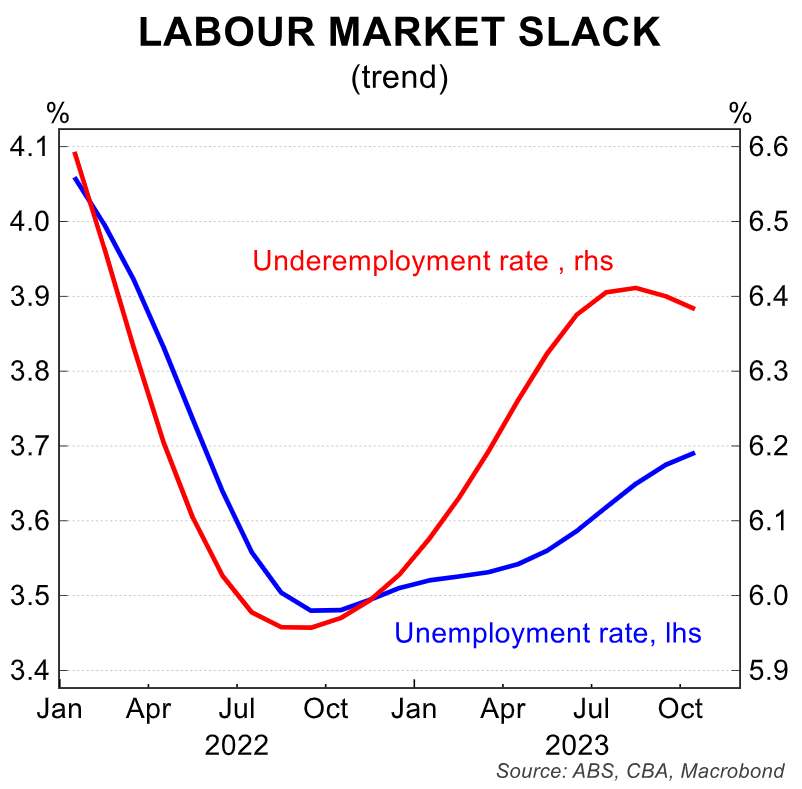
However, a new report from Anglicare claims that demand for starter jobs is far outstripping supply across country.
Its annual Jobs Snapshot report found that there are now an average of 26 applicants for each entry-level job vacancy, and 18 of them have been unemployed for at least 12 months.
The report says that the odds are heavily stacked against jobseekers who have not finished year 12, older workers trying to gain employment after losing their jobs, people with disabilities or mothers short on skills after raising their children.
Anglicare’s executive director Kasy Chambers says people with barriers to work barely stand a chance of getting these jobs.
“Our snapshot shows that almost 560,000 Australians in this situation are looking for work”, Chambers, said.
“They are long-term unemployed, and they are being left behind each year”.
“They need entry-level jobs to get their feet on the ladder, but there aren’t enough to meet demand in any part of the country”.
The news isn’t all bad with an analysis from SEEK showing that job ads for entry level positions increased sharply over the pandemic, albeit has fallen over the past year:
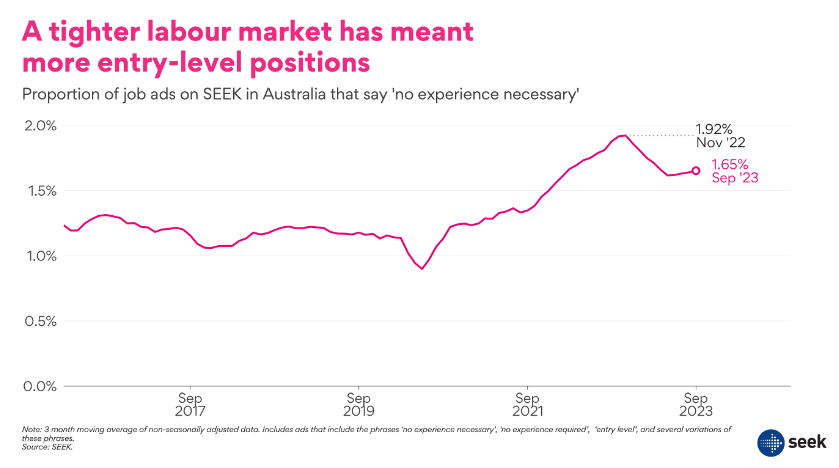
In fact, job ads has grown fastest for the lowest paid jobs:
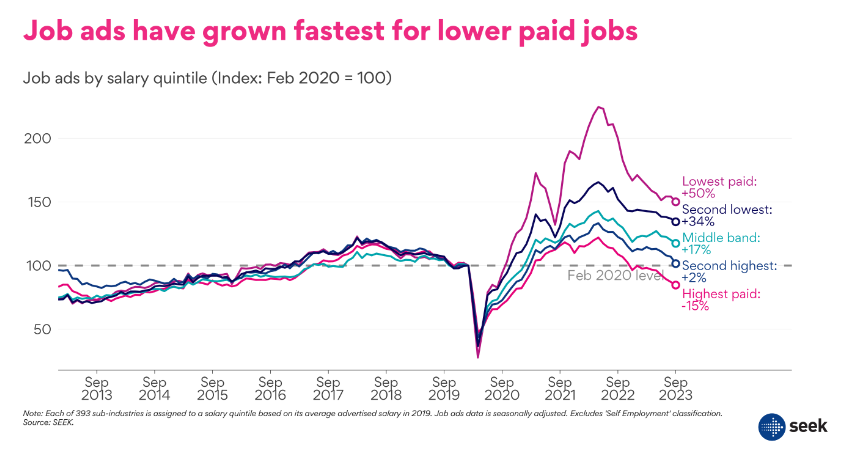
Whereas unemployment rates fell most for the lower skilled:
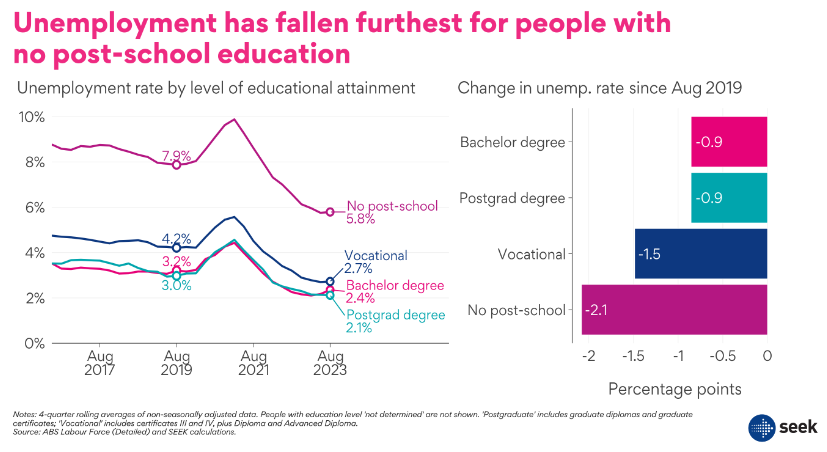
The problem looking ahead is that job ads have fallen sharply since mid-2022, pointing to rising unemployment:
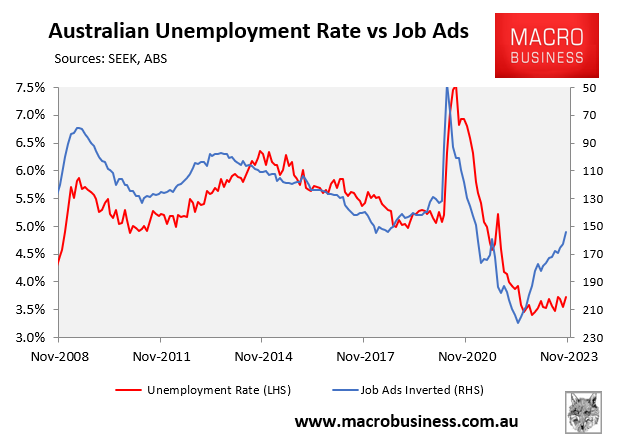
At the same time, Australia’s labour supply has risen at a record pace amid surging net overseas migration, which has driven the number of applications per job well above pre-pandemic levels. This also points to rising unemployment:
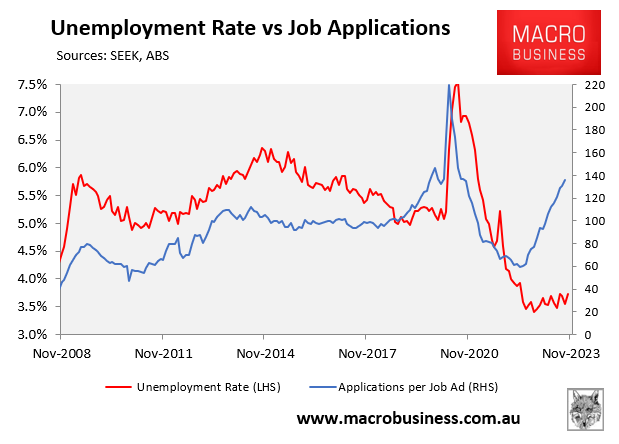
The other problem is that Australia’s record net overseas migration has been driven by international students, who compete with Australians for entry level jobs:
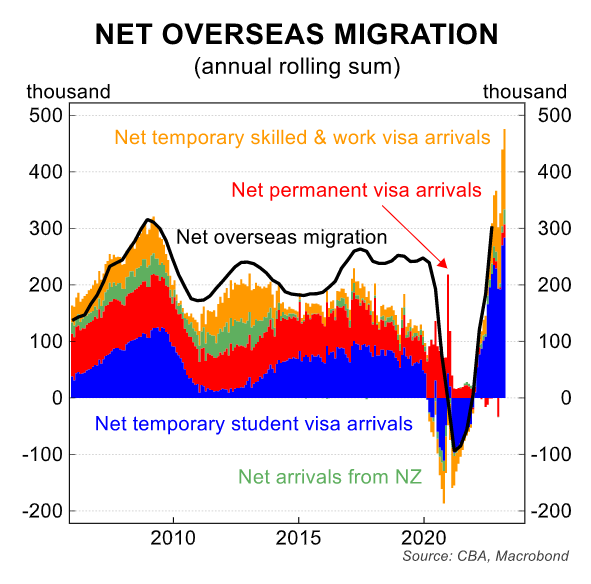
This points to a rising joblessness among younger and lower-skilled workers. Indeed, the youth unemployment rate rose further in October, to 9.2%, the highest since late 2021:
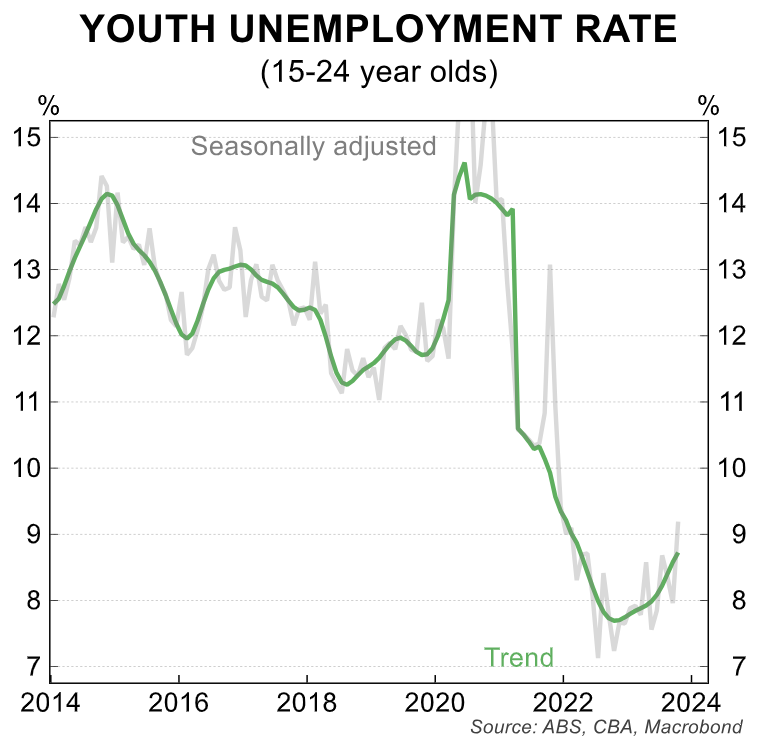
Record numbers of international students and a softening economy is bad news for Australians seeking entry-level jobs.

